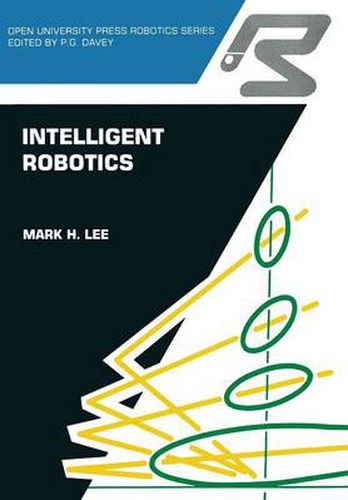Readings Newsletter
Become a Readings Member to make your shopping experience even easier.
Sign in or sign up for free!
You’re not far away from qualifying for FREE standard shipping within Australia
You’ve qualified for FREE standard shipping within Australia
The cart is loading…






This title is printed to order. This book may have been self-published. If so, we cannot guarantee the quality of the content. In the main most books will have gone through the editing process however some may not. We therefore suggest that you be aware of this before ordering this book. If in doubt check either the author or publisher’s details as we are unable to accept any returns unless they are faulty. Please contact us if you have any questions.
An industrial robot routinely carrying out an assembly or welding task is an impressive sight. More important, when operated within its design conditions it is a reliable production machine which - depending on the manufacturing process being automated - is relatively quick to bring into operation and can often repay its capital cost within a year or two. Yet first impressions can be deceptive: if the workpieces deviate somewhat in size or position, or, worse; if a gripper slips or a feeder jams the whole system may halt and look very unimpressive indeed. This is mainly because the sum total of the system’s knowledge is simply a list of a few variables describing a sequence of positions in space; the means of moving from one to the next; how to react to a few input signals; and how to give a few output commands to associated machines. The acquisition, orderly retention and effective use of knowledge are the crucial missing techniques whose inclusion over the coming years will transform today’s industrial robot into a truly robotic system embodying the ‘intelligent connection of perception to action’. The use of computers to implement these techniques is the domain of Artificial Intelligence (AI) (machine intelligence). Evidently, it is an essential ingredient in the future development of robotics; yet the relationship between AI practitioners and robotics engineers has been an uneasy one ever since the two disciplines were born.
$9.00 standard shipping within Australia
FREE standard shipping within Australia for orders over $100.00
Express & International shipping calculated at checkout
This title is printed to order. This book may have been self-published. If so, we cannot guarantee the quality of the content. In the main most books will have gone through the editing process however some may not. We therefore suggest that you be aware of this before ordering this book. If in doubt check either the author or publisher’s details as we are unable to accept any returns unless they are faulty. Please contact us if you have any questions.
An industrial robot routinely carrying out an assembly or welding task is an impressive sight. More important, when operated within its design conditions it is a reliable production machine which - depending on the manufacturing process being automated - is relatively quick to bring into operation and can often repay its capital cost within a year or two. Yet first impressions can be deceptive: if the workpieces deviate somewhat in size or position, or, worse; if a gripper slips or a feeder jams the whole system may halt and look very unimpressive indeed. This is mainly because the sum total of the system’s knowledge is simply a list of a few variables describing a sequence of positions in space; the means of moving from one to the next; how to react to a few input signals; and how to give a few output commands to associated machines. The acquisition, orderly retention and effective use of knowledge are the crucial missing techniques whose inclusion over the coming years will transform today’s industrial robot into a truly robotic system embodying the ‘intelligent connection of perception to action’. The use of computers to implement these techniques is the domain of Artificial Intelligence (AI) (machine intelligence). Evidently, it is an essential ingredient in the future development of robotics; yet the relationship between AI practitioners and robotics engineers has been an uneasy one ever since the two disciplines were born.